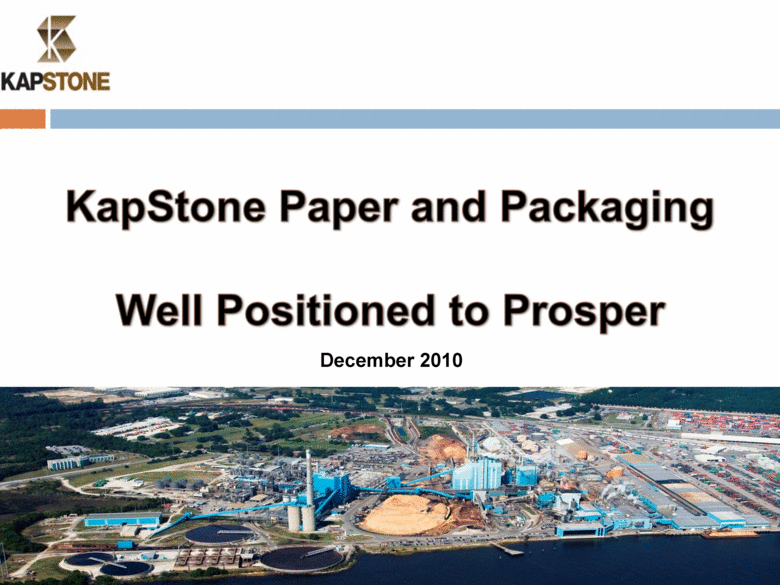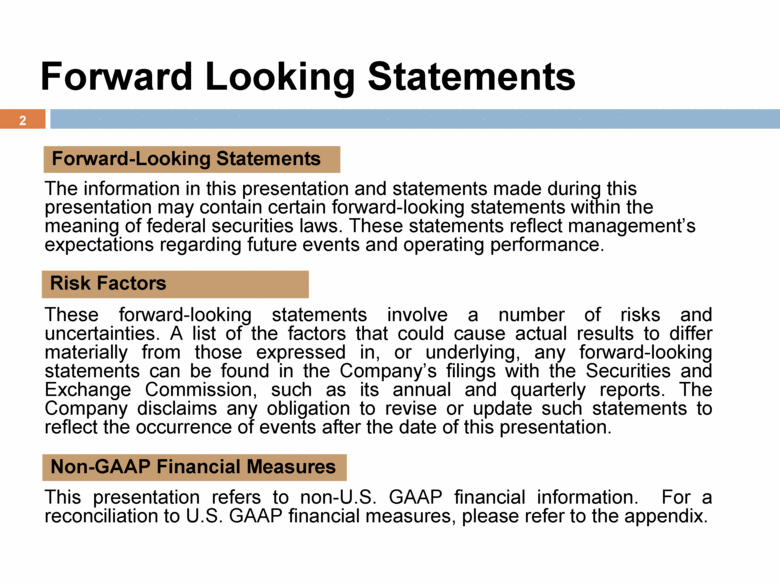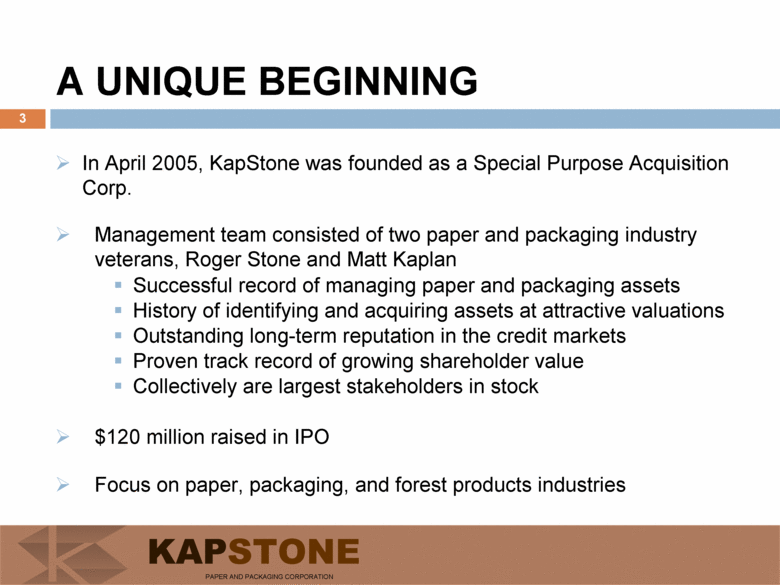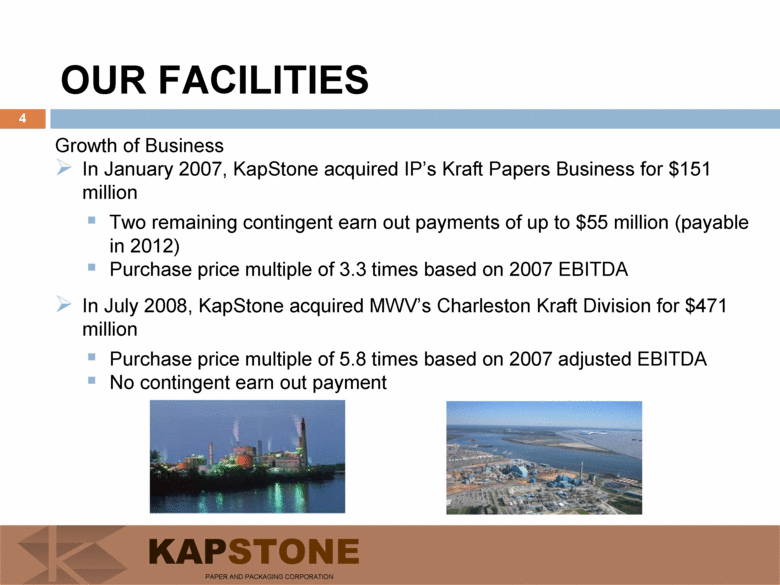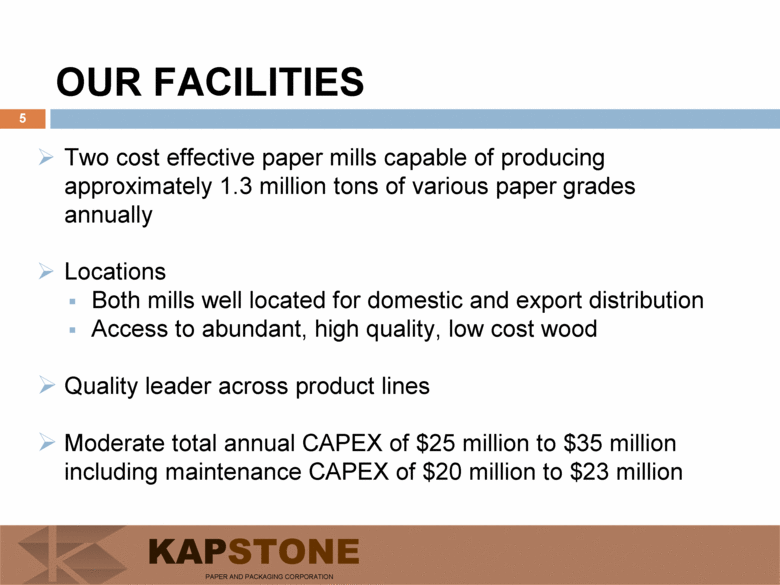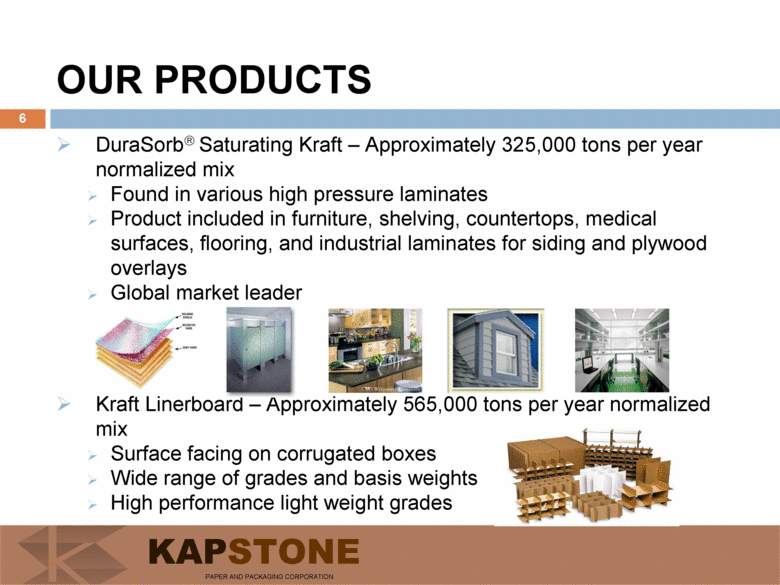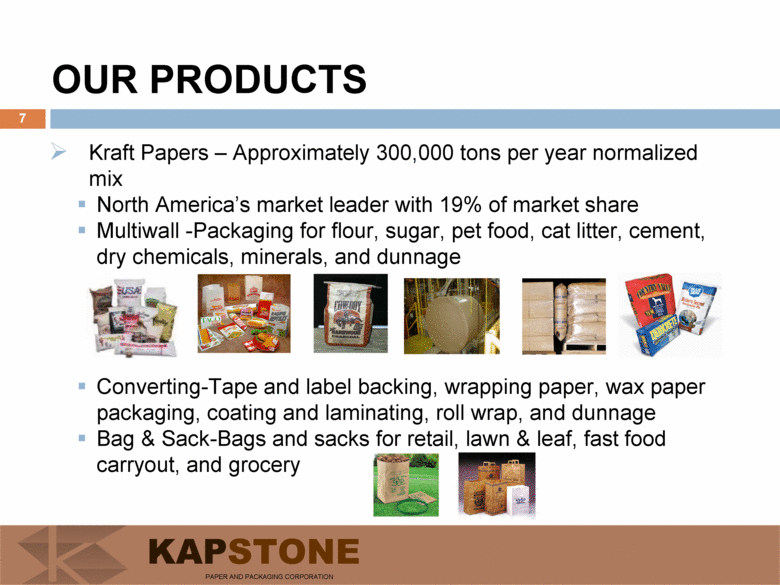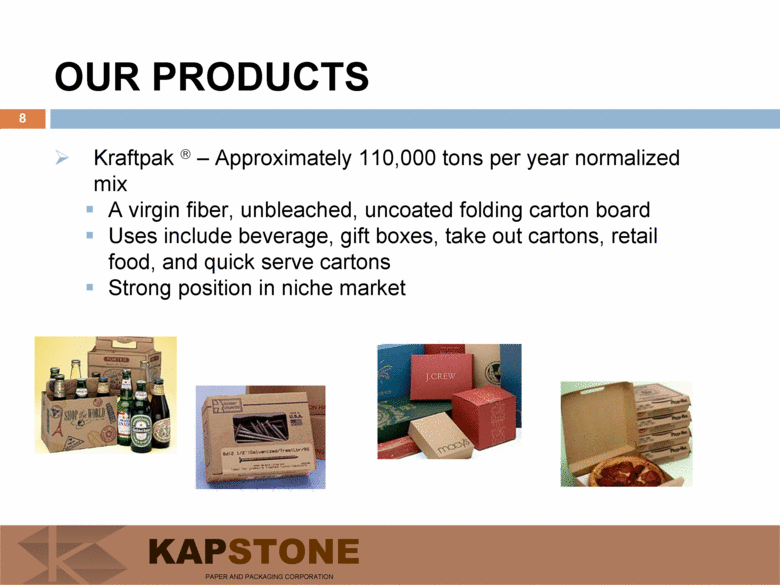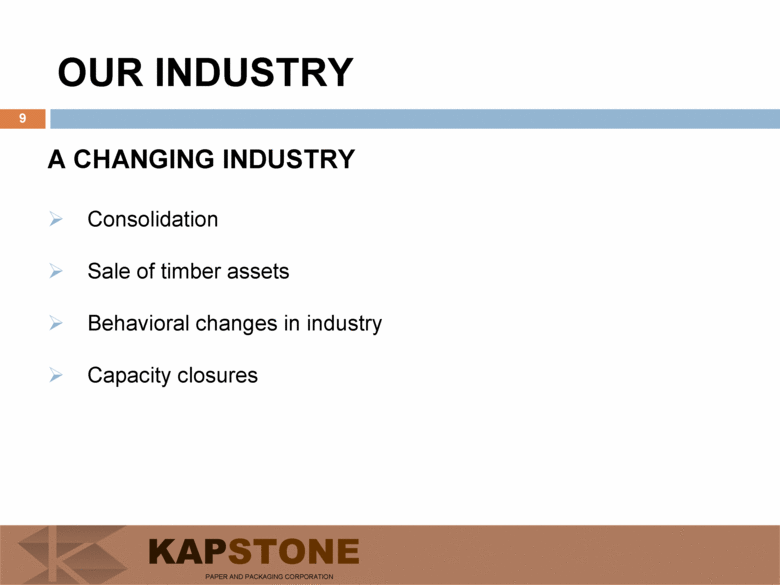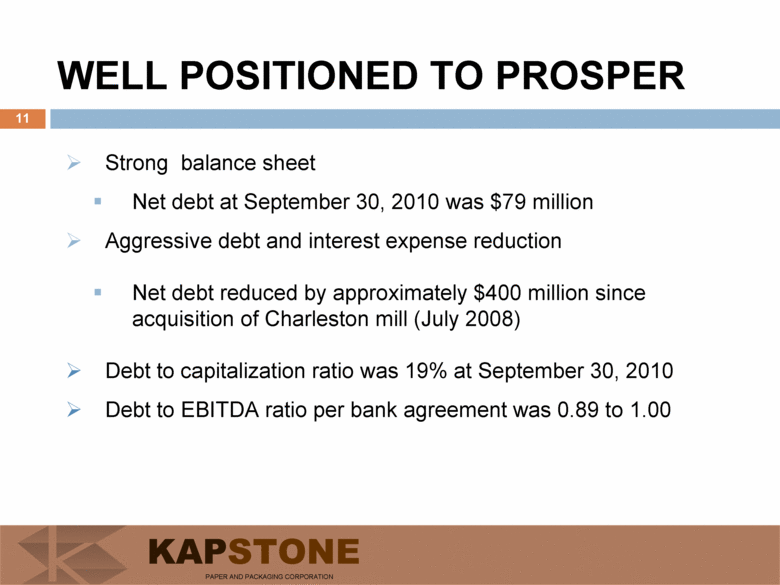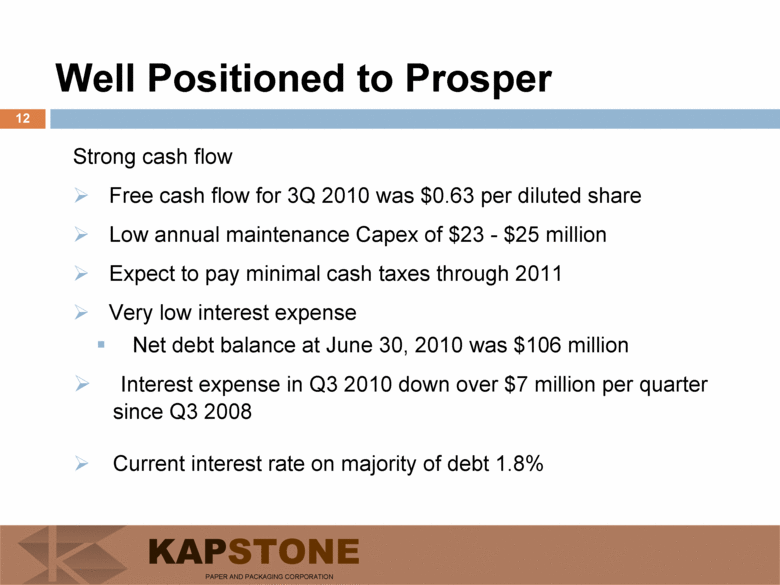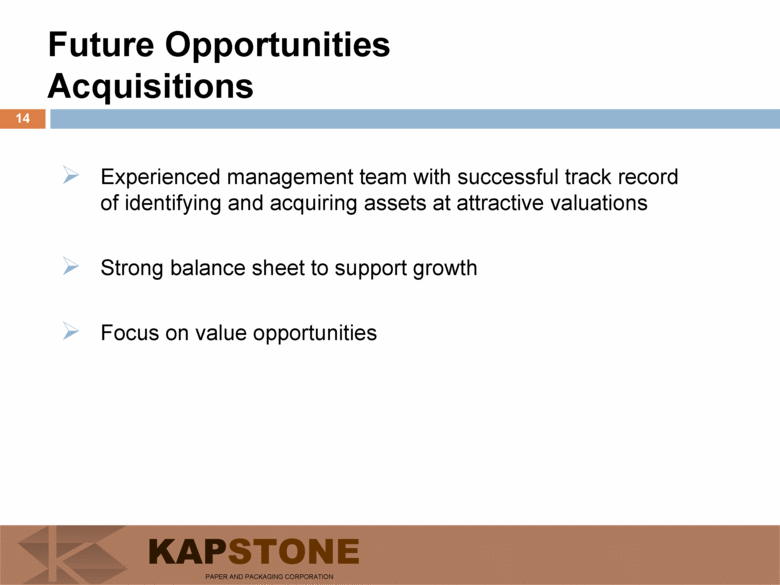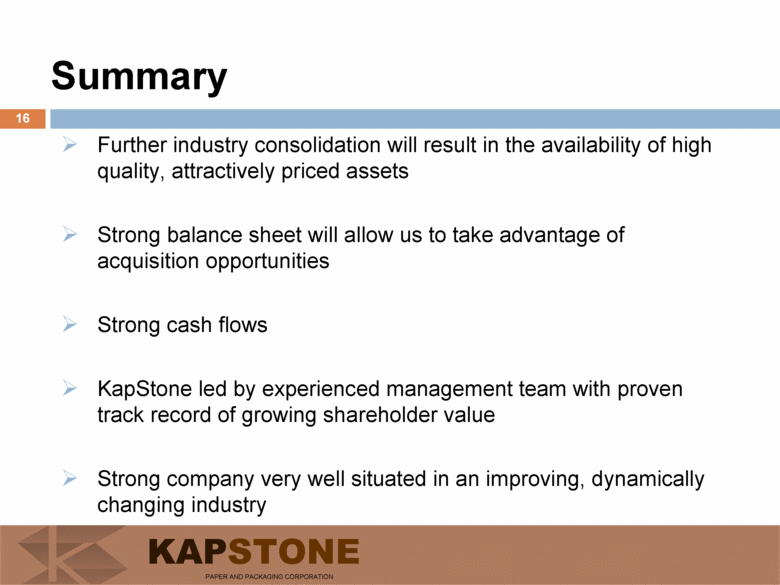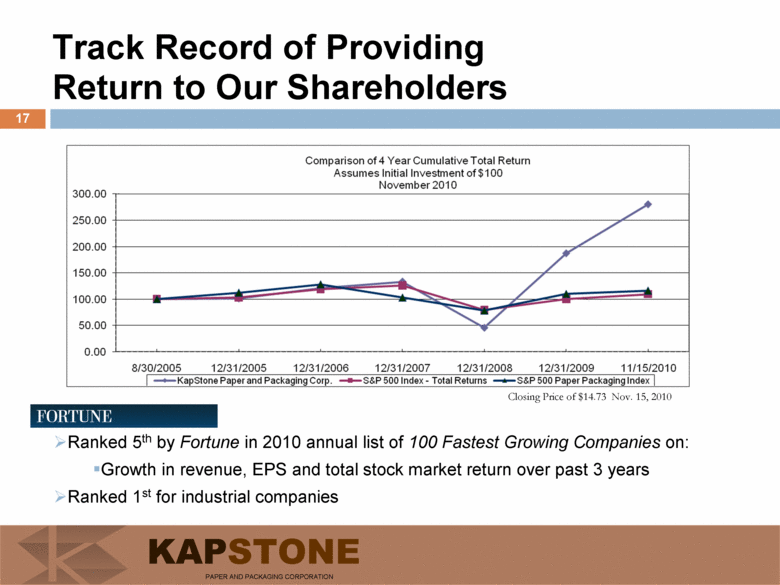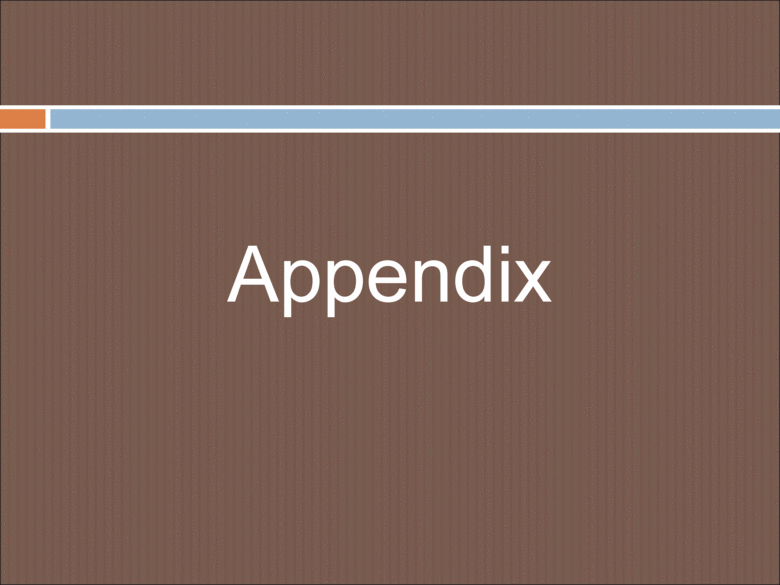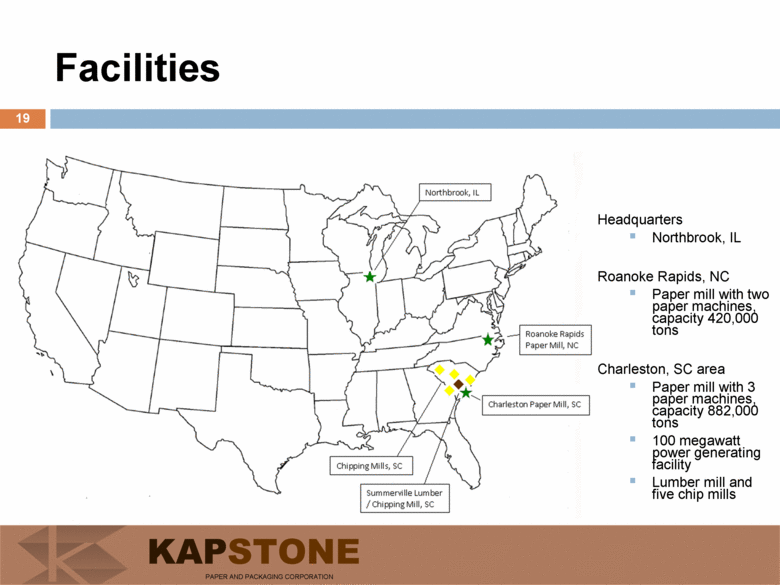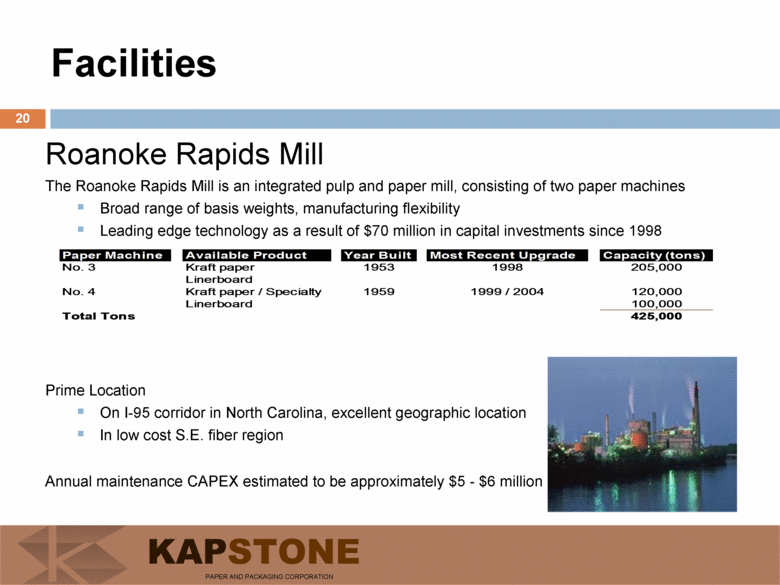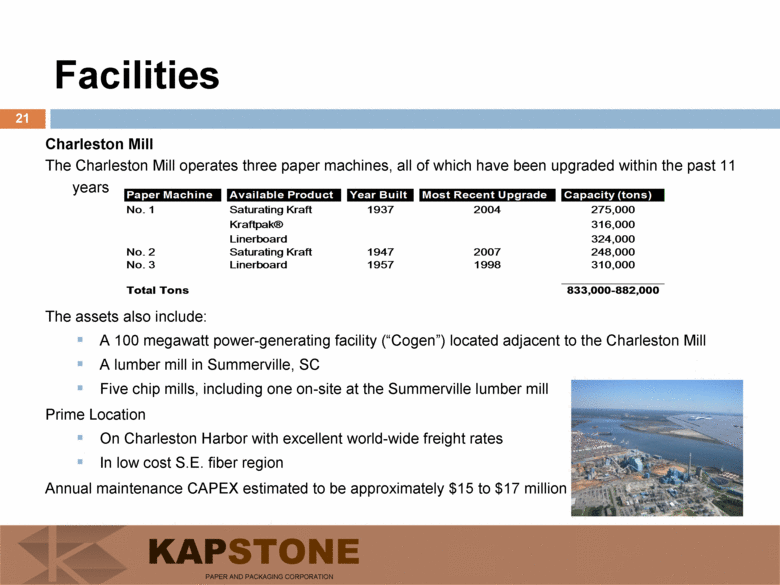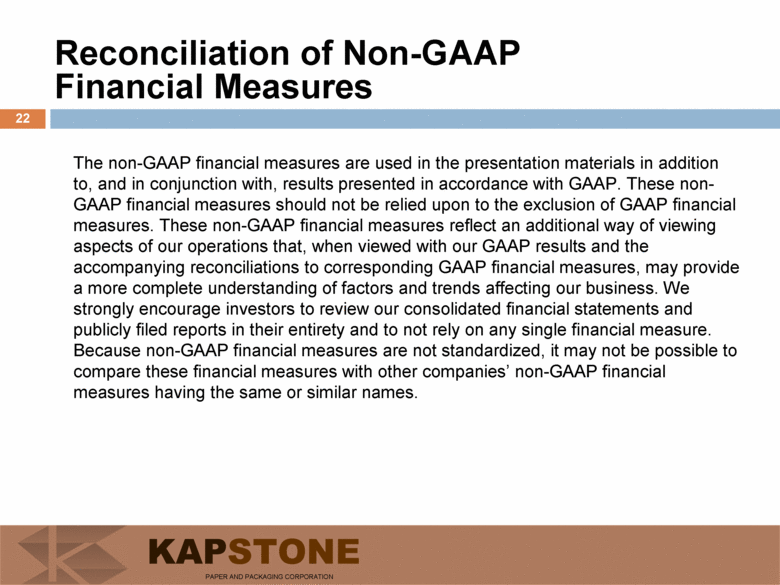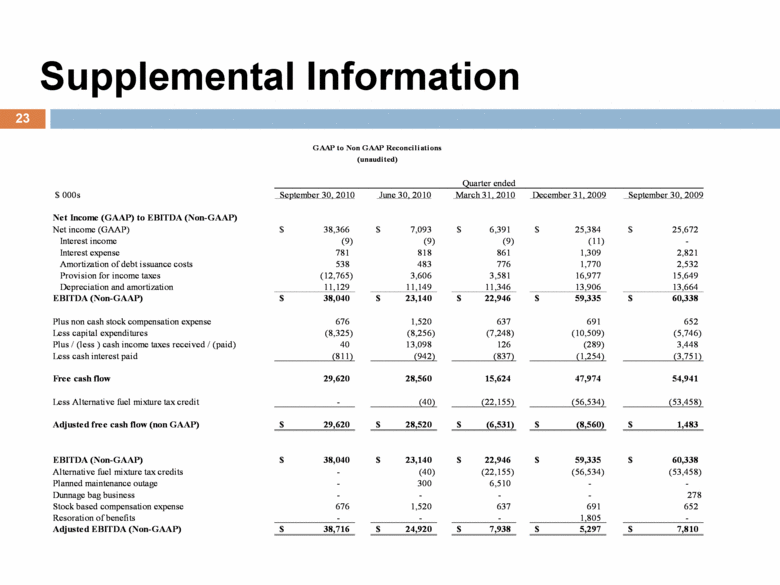Attached files
| file | filename |
|---|---|
| 8-K/A - 8-K/A - KAPSTONE PAPER & PACKAGING CORP | a10-22640_18ka.htm |
Exhibit 99.1
|
|
KapStone Paper and Packaging Well Positioned to Prosper December 2010 |
|
|
2 Forward Looking Statements The information in this presentation and statements made during this presentation may contain certain forward-looking statements within the meaning of federal securities laws. These statements reflect management’s expectations regarding future events and operating performance. These forward-looking statements involve a number of risks and uncertainties. A list of the factors that could cause actual results to differ materially from those expressed in, or underlying, any forward-looking statements can be found in the Company’s filings with the Securities and Exchange Commission, such as its annual and quarterly reports. The Company disclaims any obligation to revise or update such statements to reflect the occurrence of events after the date of this presentation. This presentation refers to non-U.S. GAAP financial information. For a reconciliation to U.S. GAAP financial measures, please refer to the appendix. Forward-Looking Statements Non-GAAP Financial Measures Risk Factors 2 |
|
|
A UNIQUE BEGINNING 3 In April 2005, KapStone was founded as a Special Purpose Acquisition Corp. Management team consisted of two paper and packaging industry veterans, Roger Stone and Matt Kaplan Successful record of managing paper and packaging assets History of identifying and acquiring assets at attractive valuations Outstanding long-term reputation in the credit markets Proven track record of growing shareholder value Collectively are largest stakeholders in stock $120 million raised in IPO Focus on paper, packaging, and forest products industries |
|
|
4 Growth of Business In January 2007, KapStone acquired IP’s Kraft Papers Business for $151 million Two remaining contingent earn out payments of up to $55 million (payable in 2012) Purchase price multiple of 3.3 times based on 2007 EBITDA In July 2008, KapStone acquired MWV’s Charleston Kraft Division for $471 million Purchase price multiple of 5.8 times based on 2007 adjusted EBITDA No contingent earn out payment OUR FACILITIES |
|
|
OUR FACILITIES 5 Two cost effective paper mills capable of producing approximately 1.3 million tons of various paper grades annually Locations Both mills well located for domestic and export distribution Access to abundant, high quality, low cost wood Quality leader across product lines Moderate total annual CAPEX of $25 million to $35 million including maintenance CAPEX of $20 million to $23 million |
|
|
OUR PRODUCTS 6 DuraSorb® Saturating Kraft – Approximately 325,000 tons per year normalized mix Found in various high pressure laminates Product included in furniture, shelving, countertops, medical surfaces, flooring, and industrial laminates for siding and plywood overlays Global market leader Kraft Linerboard – Approximately 565,000 tons per year normalized mix Surface facing on corrugated boxes Wide range of grades and basis weights High performance light weight grades |
|
|
OUR PRODUCTS 7 Kraft Papers – Approximately 300,000 tons per year normalized mix North America’s market leader with 19% of market share Multiwall -Packaging for flour, sugar, pet food, cat litter, cement, dry chemicals, minerals, and dunnage Converting-Tape and label backing, wrapping paper, wax paper packaging, coating and laminating, roll wrap, and dunnage Bag & Sack-Bags and sacks for retail, lawn & leaf, fast food carryout, and grocery |
|
|
OUR PRODUCTS 8 Kraftpak® – Approximately 110,000 tons per year normalized mix A virgin fiber, unbleached, uncoated folding carton board Uses include beverage, gift boxes, take out cartons, retail food, and quick serve cartons Strong position in niche market |
|
|
OUR INDUSTRY 9 A CHANGING INDUSTRY Consolidation Sale of timber assets Behavioral changes in industry Capacity closures |
|
|
Well Positioned to Prosper 10 Avg. Revenue per Ton EBITDA Margins – Have More than Tripled Net Sales and Avg. Revenue Growing – Up More than 20% Over Prior Year Substantial Cash Generation and Rapid Net Debt Reduction Net Debt Net Sales Adj. EBITDA Adj. EBITDA Margins -----See appendix for reconciliations----- $ in Millions |
|
|
11 Strong balance sheet Net debt at September 30, 2010 was $79 million Aggressive debt and interest expense reduction Net debt reduced by approximately $400 million since acquisition of Charleston mill (July 2008) Debt to capitalization ratio was 19% at September 30, 2010 Debt to EBITDA ratio per bank agreement was 0.89 to 1.00 WELL POSITIONED TO PROSPER |
|
|
Well Positioned to Prosper 12 Strong cash flow Free cash flow for 3Q 2010 was $0.63 per diluted share Low annual maintenance Capex of $23 - $25 million Expect to pay minimal cash taxes through 2011 Very low interest expense Net debt balance at June 30, 2010 was $106 million Interest expense in Q3 2010 down over $7 million per quarter since Q3 2008 Current interest rate on majority of debt 1.8% |
|
|
Average Revenue per Ton FUTURE OPPORTUNITIES PRICE IMPROVEMENT 13 Our selling prices and average revenue per ton have increased significantly since 3Q 2009 Average revenue per ton fell from peak of $621 per ton in 4Q 2008 to low of $495 per ton in 3Q 2009 Price restoration began late in the fourth quarter of 2009 Expect approximately $40 million of carryover as a result of 2010 price increases |
|
|
Future Opportunities Acquisitions 14 Experienced management team with successful track record of identifying and acquiring assets at attractive valuations Strong balance sheet to support growth Focus on value opportunities |
|
|
Summary 15 Positive effects of economic recovery Demand rebounded significantly providing healthy backlogs at maximum operating rates Paper prices rebounded rapidly from previously depressed levels Product mix improved as demand for saturating kraft, domestic linerboard and kraft paper increase Benefits from industry consolidation Unprecedented level of supply discipline and inventory management KapStone’s low cost mills use 100% virgin pulpwood Both mills located in excellent wood baskets No exposure to variability of OCC pricing |
|
|
Summary 16 Further industry consolidation will result in the availability of high quality, attractively priced assets Strong balance sheet will allow us to take advantage of acquisition opportunities Strong cash flows KapStone led by experienced management team with proven track record of growing shareholder value Strong company very well situated in an improving, dynamically changing industry |
|
|
Track Record of Providing Return to Our Shareholders 17 Closing Price of $14.73 Nov. 15, 2010 Ranked 5th by Fortune in 2010 annual list of 100 Fastest Growing Companies on: Growth in revenue, EPS and total stock market return over past 3 years Ranked 1st for industrial companies |
|
|
Appendix |
|
|
Facilities 19 Headquarters Northbrook, IL Roanoke Rapids, NC Paper mill with two paper machines, capacity 420,000 tons Charleston, SC area Paper mill with 3 paper machines, capacity 882,000 tons 100 megawatt power generating facility Lumber mill and five chip mills |
|
|
Facilities 20 Roanoke Rapids Mill The Roanoke Rapids Mill is an integrated pulp and paper mill, consisting of two paper machines Broad range of basis weights, manufacturing flexibility Leading edge technology as a result of $70 million in capital investments since 1998 Prime Location On I-95 corridor in North Carolina, excellent geographic location In low cost S.E. fiber region Annual maintenance CAPEX estimated to be approximately $5 - $6 million 425,000 Total Tons 100,000 Linerboard 120,000 1999 / 2004 1959 Kraft paper / Specialty No. 4 Linerboard 205,000 1998 1953 Kraft paper No. 3 Capacity (tons) Most Recent Upgrade Year Built Available Product Paper Machine |
|
|
Facilities 21 Charleston Mill The Charleston Mill operates three paper machines, all of which have been upgraded within the past 11 years The assets also include: A 100 megawatt power-generating facility (“Cogen”) located adjacent to the Charleston Mill A lumber mill in Summerville, SC Five chip mills, including one on-site at the Summerville lumber mill Prime Location On Charleston Harbor with excellent world-wide freight rates In low cost S.E. fiber region Annual maintenance CAPEX estimated to be approximately $15 to $17 million 833,000-882,000 Total Tons 310,000 1998 1957 Linerboard No. 3 248,000 2007 1947 Saturating Kraft No. 2 1 or 324,000 Linerboard 1 or 316,000 Kraftpak® 1 or 275,000 2004 1937 Saturating Kraft No. 1 Capacity (tons) Most Recent Upgrade Year Built Available Product Paper Machine |
|
|
Reconciliation of Non-GAAP Financial Measures 22 The non-GAAP financial measures are used in the presentation materials in addition to, and in conjunction with, results presented in accordance with GAAP. These non-GAAP financial measures should not be relied upon to the exclusion of GAAP financial measures. These non-GAAP financial measures reflect an additional way of viewing aspects of our operations that, when viewed with our GAAP results and the accompanying reconciliations to corresponding GAAP financial measures, may provide a more complete understanding of factors and trends affecting our business. We strongly encourage investors to review our consolidated financial statements and publicly filed reports in their entirety and to not rely on any single financial measure. Because non-GAAP financial measures are not standardized, it may not be possible to compare these financial measures with other companies’ non-GAAP financial measures having the same or similar names. |
|
|
23 Supplemental Information $ 000s September 30, 2010 June 30, 2010 March 31, 2010 December 31, 2009 September 30, 2009 Net Income (GAAP) to EBITDA (Non-GAAP) Net income (GAAP) 38,366 $ 7,093 $ 6,391 $ 25,384 $ 25,672 $ Interest income (9) (9) (9) (11) - Interest expense 781 818 861 1,309 2,821 Amortization of debt issuance costs 538 483 776 1,770 2,532 Provision for income taxes (12,765) 3,606 3,581 16,977 15,649 Depreciation and amortization 11,129 11,149 11,346 13,906 13,664 EBITDA (Non-GAAP) 38,040 $ 23,140 $ 22,946 $ 59,335 $ 60,338 $ Plus non cash stock compensation expense 676 1,520 637 691 652 Less capital expenditures (8,325) (8,256) (7,248) (10,509) (5,746) Plus / (less ) cash income taxes received / (paid) 40 13,098 126 (289) 3,448 Less cash interest paid (811) (942) (837) (1,254) (3,751) Free cash flow 29,620 28,560 15,624 47,974 54,941 Less Alternative fuel mixture tax credit - (40) (22,155) (56,534) (53,458) Adjusted free cash flow (non GAAP) 29,620 $ 28,520 $ (6,531) $ (8,560) $ 1,483 $ EBITDA (Non-GAAP) 38,040 $ 23,140 $ 22,946 $ 59,335 $ 60,338 $ Alternative fuel mixture tax credits - (40) (22,155) (56,534) (53,458) Planned maintenance outage - 300 6,510 - - Dunnage bag business - - - - 278 Stock based compensation expense 676 1,520 637 691 652 Resoration of benefits - - - 1,805 - Adjusted EBITDA (Non-GAAP) 38,716 $ 24,920 $ 7,938 $ 5,297 $ 7,810 $ Quarter ended GAAP to Non GAAP Reconciliations (unaudited) |

